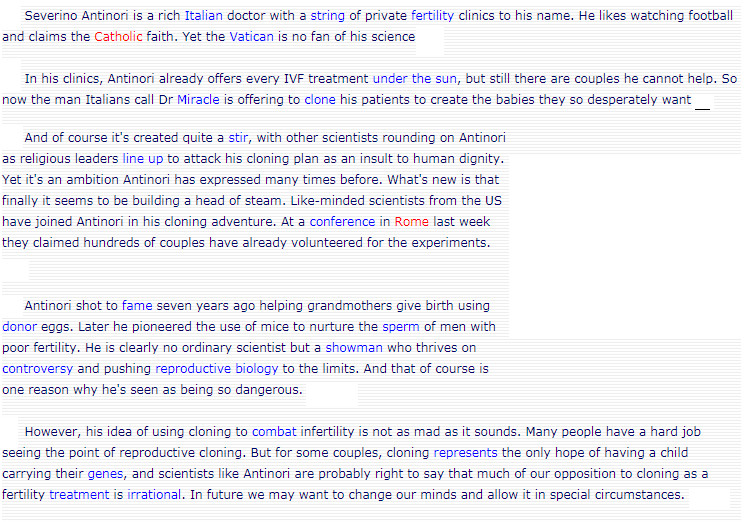 题目内容
(请给出正确答案)
题目内容
(请给出正确答案)
The Fertility BustAFatting populations—the despair of state pension systems—are often rega
The Fertility Bust
A Fatting populations—the despair of state pension systems—are often regarded with calmness, even a secret satisfaction, by ordinary people. Europeans no Longer need Large families to gather the harvest or to took after parents. They have used their good fortune to have fewer children, thinking this wilt make their tires better. Much of Europe is too crowded as it is. !s this at that is going on? Germans have been agonising about recent European Union estimates suggesting that 30% of German women are, and will remain, childless. The number is a guess: Germany does not collect figures Like this. Even if the share is 25%, as other surveys suggest, it is by far the highest in Europe.
B Germany is something of an oddity in this. In most countries with tow fertility, young women have their first child late, and stop at one. In Germany, women with children often have two or three, but many have none at all. Germany is also odd in experiencing low fertility for such a tong time. Europe is demographically potarised. Countries in the north and west saw fertility fart early, in the 196Os. Recently, they have seen it stabilise or rise back towards replacement [ever (i.e. 2.1 births per woman). Countries in the south and east, on the other hand, saw fertility rates fart much faster, more recently (often to below 1.3, a rate at which the population falls by half every 45 years). Germany combines both. Its fertility rate felt below 2 in 1971. However, it has stayed tow and is stilt only just above 1.3. This challenges the notion that European fertility is likely to stabilise at tolerable Levels. It raises questions about whether the Low birth rates of Italy and Poland, say, realty are, as some have argued, merely temporary.
C The List of explanations for why German fertility has not rebounded is tong. Michael Teitelbaum, a demographer at the Stoan Foundation in New York ticks them off: poor child care; unusually extended higher education; inflexible labour taws; high youth unemployment; and non-economic or cultural factors. One German writer, Gunter Grass, wrote a novel, "Headbirths", in 1982, about Harm and Dōrte Peters, "a model couple" who disport themselves on the beaches of Asia rather than invest time and trouble in bringing up a baby. "They keep a cat", writes Mr Grass, "and stilt have no child." The novel is subtitled "The Germans are dying out". With the exception of this cultural factor, none of these features is peculiar to Germany. If social and economic explanations account for persistent low fertility there, then they may well produce the same persistence elsewhere.
D The reason for hoping otherwise is that the initiat dectine in southern and eastern Europe was drastic, and may be reversibte. In the Mediterranean, demographic decline was associated with freeing young women from the constraints of traditional Catholicism, which encouraged large families. In eastern Europe, it was associated with the collapse in living standards and the ending of pro-birth policies after the fait of communism. In both regions, as such temporary factors fade, fertility rates might, in principle, be expected to rise. Indeed, they may already be stabilising in Italy and Spain. Germany tells you that reversing these trends can be hard. There, and elsewhere, fertility rates did not merely fall; they went below what people said they wanted. In 1979, Eurobarometer asked Europeans how many children they would tike. Almost everywhere, the answer was two: the traditional two-child idea[ persisted even when people were not delivering it. This may have reflected old habits of mind. Or people may reat[y be having fewer children than they claim to want.
E A recent paper suggests how this might come about. If women postpone their first child past their mid-30s, it may be too [ate to have a second even if they want one (the average age of first births in most of Europe is now 30). If everyone does the s
 如搜索结果不匹配,请 联系老师 获取答案
如搜索结果不匹配,请 联系老师 获取答案

























